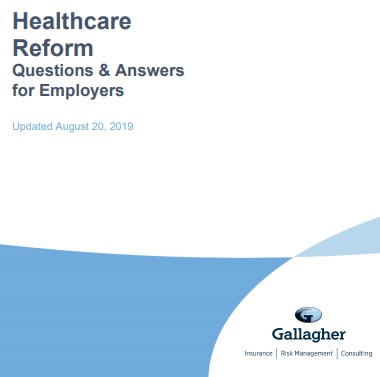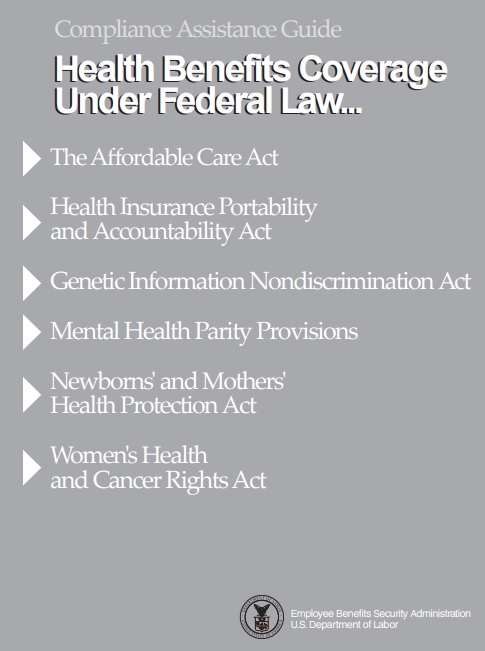California SB 1375 Prohibits Employer Association Health Plans AHP’s
California Law SB 1375 Hernandez prohibits?
(must comply with ACA protections)
Association Health Plans AHP
California’s legislators expressed concern about the relaxed rules for AHPs and particularly wanted to protect the smallest businesses from the perceived risk of having inadequate coverage or signing on with a plan that was poorly funded.
With these concerns in mind, State Senator Ed Hernandez authored SB 1375 which modifies existing law by redefining “eligible employee” to specifically exclude sole proprietors and their spouses and partners and their spouses when there are no other employees in the business. These excluded individuals are not permitted to purchase small group health plans and instead must purchase coverage in the individual market.
From a practical standpoint, this means that “owner-only” groups where there are no other employees or where the spouse is the only other employee, will not be able to purchase coverage in the small group market nor in any current AHP or in any AHP established in the future. However, SB 1375 specifically excludes members of AHPs known as MEWAs (Multiple Employer Welfare Arrangements) from the “eligible employee” redefinition and as such SB 1375 does not impact MEWAs or their members. Claremont Companies *
- delete sole proprietors, partners of a partnership, and the spouses of sole proprietors and partners from the definition of “eligible employee” for purposes of those provisions.
- provide, with respect to a sole proprietorship that consists only of the sole proprietor and his or her spouse, or a partnership that consists solely of partners and their spouses, that the sole proprietor or the partner, as applicable, and the spouses of those persons, are not considered employees for purposes of determining eligibility for small employer coverage.
- prohibit employer group health care service plans and employer group health benefit plans from being issued, marketed, or sold to a sole proprietorship or partnership without employees directly or indirectly through any arrangement, and would require that only individual health care service plans and individual health benefit plans be sold to any entity without employees.
- revise the definition of a small employer to include any small employer, as defined, who purchases coverage through any arrangement, except as specified. The bill would also make clarifying changes. Insure Me Kevin.com * DOL Final rule 29 CFR 2510* CA fight against Trump sabatoge * CA SB 1375
Federal Judge Rules Association Plans are only a run around of the ACA Modern Health Care *
I’ve only read the summary one time… the full law must be read 3 times to get a true understanding. Felix Frankfurter how to analyze law
I’ll grant you, the summary doesn’t make any sense. I’ll have to read a few more times.
Department of Managed Health Care 5.5.2020 letter – NO MEWA’s, AHP’s, VEBA’s or group coverage to individuals!
The U.S. Department of Labor has obtained a temporary restraining order against Riverstone Capital LLC; NexGen Insurance Services Inc.; and NGI Brokerage Services Inc. (collectively, “Riverstone”) The order protects more than 16,000 participants and beneficiaries of a failing self-funded insurance arrangement
the MEWA was in danger of collapsing, leaving little to no money to pay outstanding claims,
approximately $24 million in processed but unpaid claims, despite collecting only between $4-6 million in contributions each month and having reserves far short of the amount needed to pay the claims.
delayed the payment of approved claims and “cherry-picked” which claims to pay. https://www.dol.gov/newsroom/releases/ebsa/ebsa20190211
Links & Resources
- Definition of “Employer”—Association Health Plans Federal Register
- Association Health Plans Get Assist From Business Groups, GOP
- Junk Short Term Plans?
- House Proposal to Promote Association Health Plans Poses Risks for Insurance Markets, Consumers
- Junk health insurance
Stingy plans may be worse than none at all - Assoc Plans coming back??? Mike Lujan
- New Regulations?
- Trump administration rolls out health plan rules that could weaken Obamacare January 2018
Summary of Trump Executive Order
The implementation dates are staggered, so newly formed associations won’t be able to form a self-funded health plan until April of 2019. The first opportunity to form an AHP will be in September 2018 but is only available to existing associations wishing to put a fully insured plan in place.
Associations looking to form an AHP should ensure they are fully compliant with the non-discrimination provisions in the regulations, which ensure that AHPs cannot discriminate based on a health factor or keep certain individuals or employers out of the AHP plan due to health conditions.
Association health plans will be subject to both federal and state oversight, associations with self-insured plans should ensure they have the bandwidth to ensure compliance with state regulations in addition to federal regulations. Actuaries are wary of the plans though – bankruptcies and all. Cal Broker 7.3.2018 *
For small businesses, being part of an association with the sophistication, bandwidth, and ability to create an AHP will be crucial to success. For businesses that are not currently plugged into an association, or the associations with which they are able to join are not agile, this rule will have minimal impact in the short term.
Ensuring that AHPs are not victims of adverse selection will be equally critical to their long term positive impact, and the details of each individual plan and association will be the determining factors there. Dickerson Email 6.25.2018 Final Rule Issued – Modern Health Care 6.19.2018 Near as we can tell, the rule should be posted here: cms.gov/cciio/regulations-and-guidance/Association Coverage * Final Rule *
All our plans are Guaranteed Issue with No Pre X Clause
Quote & Subsidy #Calculation
There is No charge for our complementary services
Watch our 10 minute VIDEO
that explains everything about getting a quote
- Our Quote Engine Takes all the complexity out of using pencil and paper to figure out the premiums per the Obamacare/ACA rules under CFR §1.36B-3 *
- Get more detail on the Individual & Family Carriers available in CA
Health Coverage #Guide
Art Gallagher
Health Care Reform FAQ's
Understanding Health Reform
***********************************
Compliance #Assistance Guide from DOL.Gov Health Benefits under Federal Law
- Health Care Reform Explained Kaiser Foundation Cartoon VIDEO
- Choosing a Health Plan for Your Small Business VIDEO DOL.gov
- ACA Quick Reference Guide California Small Group Employers Revision 2020 Word & Brown
- kff.org/health-policy-101/
MEWA
MEWAs
Multiple Employer Welfare Arrangements under the
Employee Retirement Income Security Act (ERISA):
A Guide to Federal and State Regulation
Brother - Sister - Sibling Side Pages Subpages
View our website with your Desktop or Tablet for the most information
Current CA Law on Associations AB 1083
§10753.05 (4) Nothing in this section shall be construed to require an association, or a trust established and maintained by an association to receive a master insurance policy issued by an admitted insurer and to administer the benefits thereof solely for association members, to offer, market or sell a benefit plan design to those who are not members of the association. However, if the association markets, offers or sells a benefit plan design to those who are not members of the association it is subject to the requirements of this section. This shall apply to an association that otherwise meets the requirements of paragraph (8) formed by merger of two or more associations after January 1, 1992, if the predecessor organizations had been in active existence on January 1, 1992, and for at least five years prior to that date and met the requirements of paragraph(5).
(5) A carrier which (A) effective January 1, 1992, and at least 20 years prior to that date, markets, offers, or sells benefit plan designs only to all members of one association and (B) does nonmarket, offer or sell any other individual, selected group, or group policy or contract providing medical, hospital and surgical benefits shall not be required to market, offer, or sell to those who are not members of the association. However, if the carrier markets, offers or sells any benefit plan design or any other individual, selected group, or group policy or contract providing medical, hospital and surgical benefits to those who are not members of the association it is subject to the requirements of this section.
(6) Each carrier that sells health benefit plans to members of one association pursuant to paragraph (5) shall submit an annual statement to the commissioner which states that the carrier is selling health benefit plans pursuant to paragraph (5) and which, for the one association, lists all the information required by paragraph(7).
(7) Each carrier that sells health benefit plans to members of any association shall submit an annual statement to the commissioner which lists each association to which the carrier sells health benefit plans, the industry or profession which is served by the association, the association’s membership criteria, a list of officers, the state in which the association is organized, and the site of its principal office.
(8) For purposes of paragraphs (4) and (6), an association is nonprofit organization comprised of a group of individuals or employers who associate based solely on participation in a specified profession or industry, accepting for membership any individual or small employer meeting its membership criteria, which do not condition membership directly or indirectly on the health or claims history of any person, which uses membership dues solely for and inconsideration of the membership and membership benefits, except that the amount of the dues shall not depend on whether the member applies for or purchases insurance offered by the association, which is organized and maintained in good faith for purposes unrelated to insurance, which has been in active existence on January 1, 1992, and at least five years prior to that date, which has a constitution and bylaws, or other analogous governing documents which provide for election of the governing board of the association by its members, which has contracted with one or more carriers to offer one or more health benefit plans to all individual members and small employer members in this state.
(c) On and after October 1, 2013, each carrier shall make available to each small employer all health benefit plans that the carrier offers or sells to small employers or to associations that include small employers for plan years on or after January 1, 2014.Notwithstanding subdivision (d) of Section 10753, for purposes of this subdivision, companies that are affiliated companies or that are eligible to file a consolidated income tax return shall be treated as one carrier.
10753.18.55. (a) Carriers may enter into contractual agreements with qualified associations, as defined in subdivision (b), under which these qualified associations may assume responsibility for performing specific administrative services, as defined in this section, for qualified association members. Carriers that enter into agreements with qualified associations for assumption of administrative services shall establish uniform definitions for the administrative services that may be provided by a qualified association or its third-party administrator. The carrier shall permit all qualified associations to assume one or more of these functions when the carrier determines the qualified association demonstrates that it has the administrative capacity to assume these functions. For the purposes of this section, administrative services provided by qualified associations or their third-party administrators shall be services pertaining to eligibility determination, enrollment, premium collection, sales, or claims administration on a per-claim basis that would otherwise be provided directly by the carrier or through a third-party administrator on a commission basis or an agent or solicitor workforce on a commission basis. Each carrier that enters into an agreement with any qualified association for the provision of administrative services shall offer all qualified associations with which it contracts the same premium discounts for performing those services the carrier has permitted the qualified association or its third-party administrator to assume. The carrier shall apply these uniform discounts to the carrier’s rates pursuant to Section 10753.14. The carrier shall report to the department its schedule of discounts for each administrative service. In no instance may a carrier provide discounts to qualified associations that are in any way intended to, or materially resulting, a reduction in premium charges to the qualified association due to the health status of the membership of the qualified association. In addition to any other remedies available to the commissioner to enforce this chapter, the commissioner may declare a contract between a carrier and a qualified association for administrative services pursuant to this section null and void if the commissioner determines any discounts provided to the qualified association are intended to, or materially result in, a reduction in premium charges to the qualified association due to the health status of the membership of the qualified association.
(b) For the purposes of this section, a qualified association is a nonprofit corporation comprised of a group of individuals or employers who associate based solely on participation in a specified profession or industry, that conforms to all of the following requirements:
(1) It accepts for membership any individual or small employer meeting its membership criteria.
(2) It does not condition membership, directly or indirectly, on the health or claims history of any person.
(3) It uses membership dues solely for and in consideration of the membership and membership benefits, except that the amount of the dues shall not depend on whether the member applies for or purchases insurance offered by the association.
(4) It is organized and maintained in good faith for purposes unrelated to insurance.
(5) It existed on January 1, 1972, and has been in continuous existence since that date.
(6) It has a constitution and bylaws or other analogous governing documents that provide for election of the governing board of the association by its members.
(7) It offered, marketed, or sold health coverage to its members for 20 continuous years prior to January 1, 1993.
(8) It agrees to offer any plan contract only to association members.
(9) It agrees to include any member choosing to enroll in the plan contract offered by the association, provided that the member agrees to make required premium payments.
(10) It complies with all provisions of this article.
(11) It had at least 10,000 enrollees covered by association-sponsored plans immediately prior to enactment of Chapter1128 of the Statutes of 1992.
(12) It applies any administrative cost at an equal rate to all members purchasing coverage through the qualified association.
(c) A qualified association shall comply with the requirements set forth in Section 10198.9.
****On the other hand***********
Twelve Democratic attorneys general sued the Trump administration Thursday to block a new rule making it easier for small firms and individuals to band together in association health plans free from many Affordable Care Act market rules. The suit, filed in U.S. District Court for the District of Columbia, alleged the final rule issued by the U.S. Department of Labor last month violated the Administrative Procedure Act, the Affordable Care Act, and the Employee Retirement Income Security Act. Modern Health Care 7.26.2018 *
Proposed Rule 83 pages pdf dated 1.5.2018 29 CFR Part 2510 RIN 1210-AB85 Definition of “Employer” under Section 3(5) of ERISA — Association Health Plans AHIP brief on AHP Association Health Plans 10.2017 Commonwealth Fund 10.2017 The order of 10.12.2017 directs the Secretary of Labor to consider expanding access to Association Health Plans (AHPs), which could potentially allow American employers to form groups across State lines.
o A broader interpretation of the Employee Retirement Income Security Act (ERISA) could potentially allow employers in the same line of business anywhere in the country to join together to offer healthcare coverage to their employees. Prior, an association had to be pre-existing and organized for reasons other than getting health insurance.
It could potentially allow employers to form AHPs through existing organizations, or create new ones for the express purpose of offering group insurance.
o By potentially making it easier for employers to band together, workers could have access to a broader range of insurance options at lower rates in the large group market.
o Employers participating in an AHP cannot exclude any employee from joining the plan and cannot develop premiums based on health conditions. White House 10.12.2017 *
Cal Broker Magazine – 13 states including CA are fighting the order
Massachusetts and New York to file suit to do away with the regulation allowing association Health Plans thehill.com will-sue
Fraud Potential – History Modern Health Care *
Resources & Links
Michael Lujan comments on trumps executive order
https://www.linkedin.com/pulse/trumps-executive-order-obamacare-michael-lujan
Trump plots another backdoor effort to gut Obamacare’s consumer protections – Los Angeles Times https://apple.news/AUiYrT9TWQ4iqLE8GYPi8xQ
California department of insurance opposes Trump’s executive order signed today
http://www.insurance.ca.gov/0400-news/0100-press-releases/2017/statement104-17.cfm
MEWA Multiple Employer Welfare Arrangements under the Employee Retirement Income Security Act (ERISA):
A Guide to Federal and State Regulation 132 pages
See our page on AB 1083 Employer Group – Insurance Carrier Requirements







https://www.cnn.com/2024/03/28/politics/short-term-health-insurance-plans-biden/index.html
https://www.dol.gov/agencies/ebsa/about-ebsa/our-activities/resource-center/publications/mewa-under-erisa-a-guide-to-federal-and-state-regulation
what provisions should Trump make for the AHP insurance program?
What specific language might Trump and the Labor Department should us to eliminate the objections in the current plan?
First, how much does Trump want to destroy Obamacare? AB 1672 that we had before for small groups? How does allowing splinter groups benefit the public rather than the large pools under Obamacare or prior AB 1672?
See videos above for an introduction so that we know we are both on the same page.
I suggest that you check the comments that were made during the public commenting period which has now ended.
Tom Price Video on advantages of AHP’s
USA Today article on AHP’s written after commenting period closed, 4.4.2018 though I don’t see that they mention the results of the comments made.
modernhealthcare.com/article/20180307/NEWS/180309924 Modern Health Care 3.7.2018 the day after commenting closed.
See video’s above
Steve,
I have shared your reference and commentary with the White House.
Thank you.
Ken A
Tips on submitting comments
https://www.regulations.gov/docs/Tips_For_Submitting_Effective_Comments.pdf